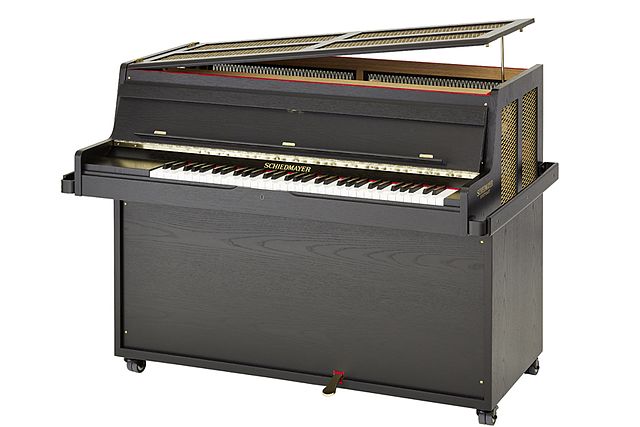The celesta or celeste, also called a bell-piano, is a struck idiophone operated by a keyboard. It looks similar to an upright piano, albeit with smaller keys and a much smaller cabinet, or a large wooden music box (three-octave). The keys connect to hammers that strike a graduated set of metal plates or bars suspended over wooden resonators. Four- or five-octave models usually have a damper pedal that sustains or damps the sound. The three-octave instruments do not have a pedal because of their small "table-top" design. One of the best-known works that uses the celesta is Pyotr Ilyich Tchaikovsky's "Dance of the Sugar Plum Fairy" from The Nutcracker.
Celesta
Inside view of a celesta
Celesta with back cover removed
The Nutcracker, Op. 71, is an 1892 two-act classical ballet by Pyotr Ilyich Tchaikovsky, set on Christmas Eve at the foot of a Christmas tree in a child's imagination. The plot is an adaptation of E. T. A. Hoffmann's 1816 short story The Nutcracker and the Mouse King. The ballet's first choreographer was Marius Petipa, with whom Tchaikovsky had worked three years earlier on The Sleeping Beauty, assisted by Lev Ivanov. Although the complete and staged The Nutcracker ballet was not as successful as had been the 20-minute Nutcracker Suite that Tchaikovsky had premiered nine months earlier, The Nutcracker soon became popular.
(Left to right) Lydia Rubtsova as Marianna, Stanislava Belinskaya as Clara and Vassily Stukolkin as Fritz, in the original production of The Nutcracker (Imperial Mariinsky Theatre, Saint Petersburg, 1892)
Varvara Nikitina as the Sugar Plum Fairy and Pavel Gerdt as the Cavalier, in a later performance in the original run of The Nutcracker, 1892
Olga Preobrajenska as the Sugar Plum Fairy and Nikolai Legat as Prince Coqueluche in the Grand pas de deux in the original production of The Nutcracker. Imperial Mariinsky Theatre, Saint Petersburg, c. 1900
Ivan Vsevolozhsky's original costume sketch for The Nutcracker (1892)







